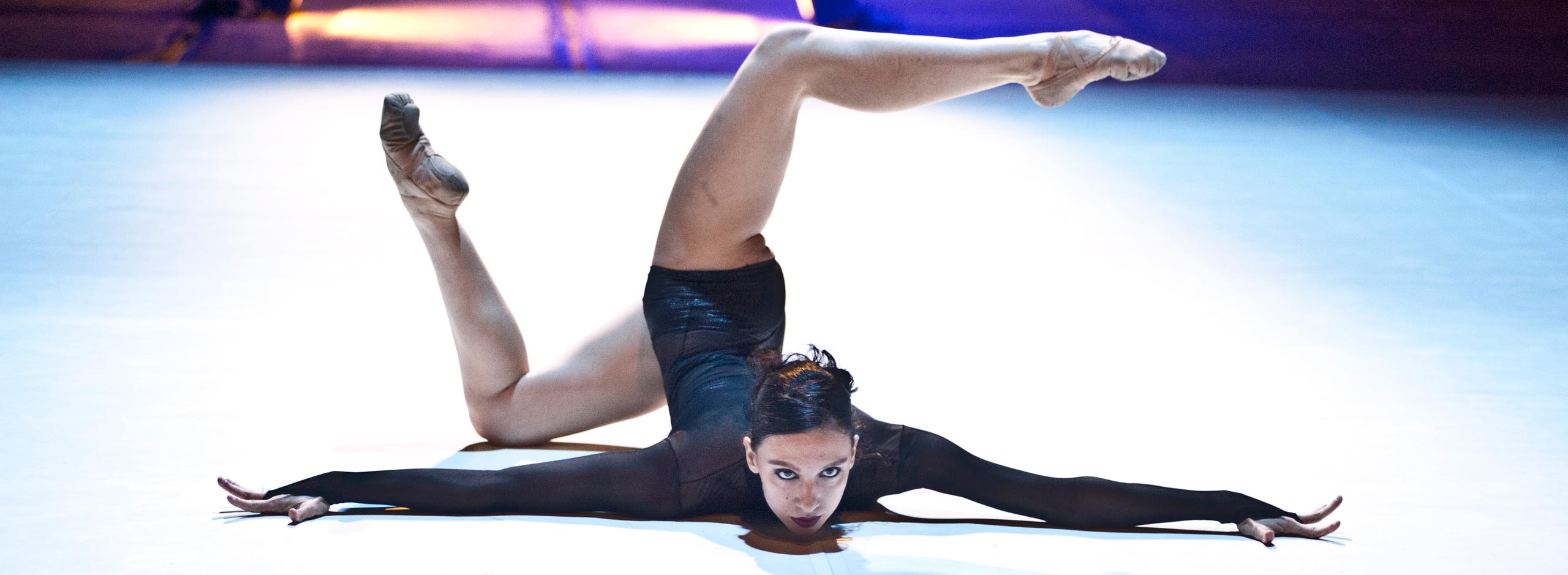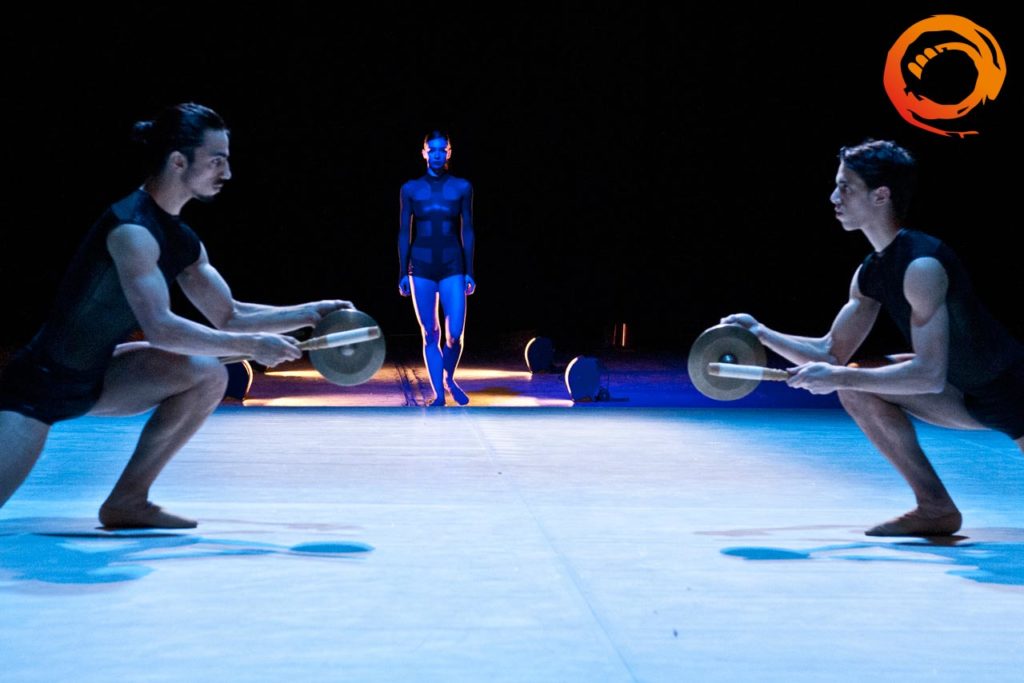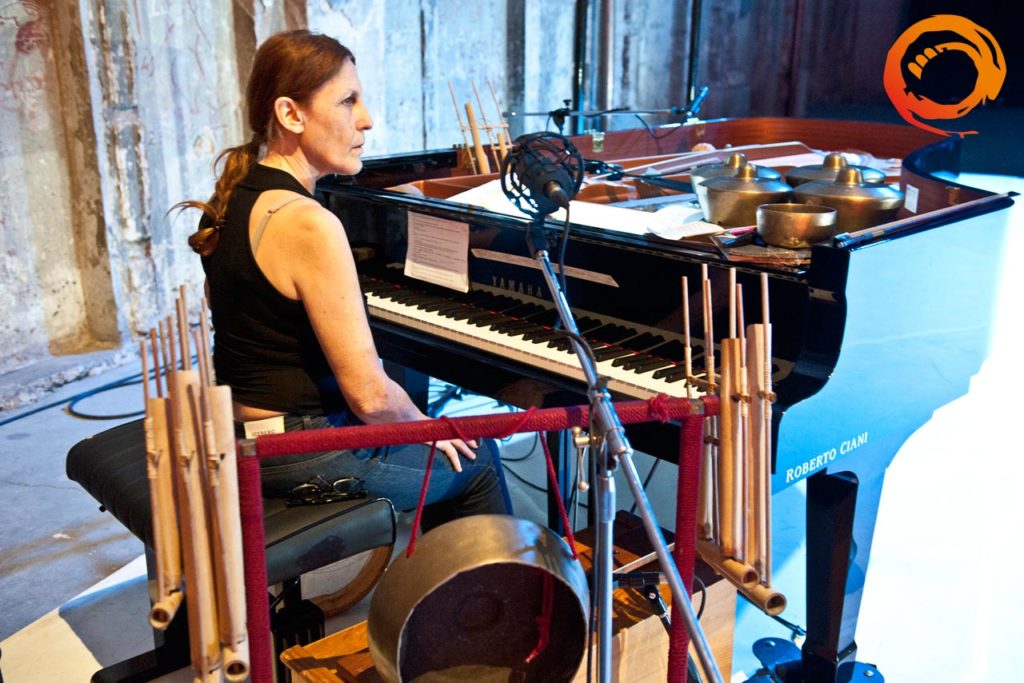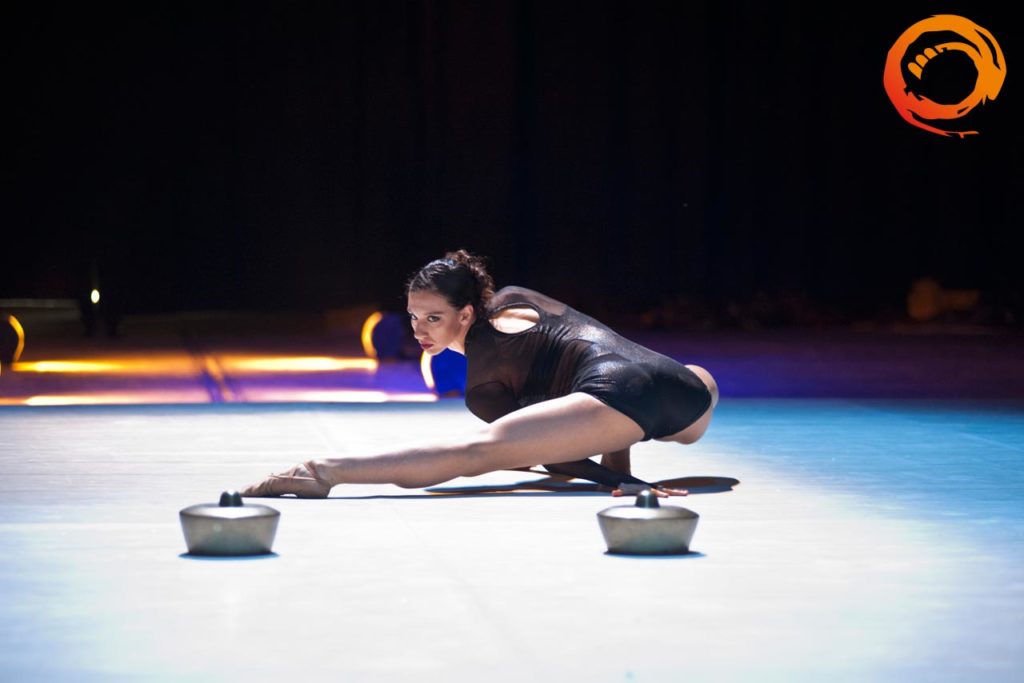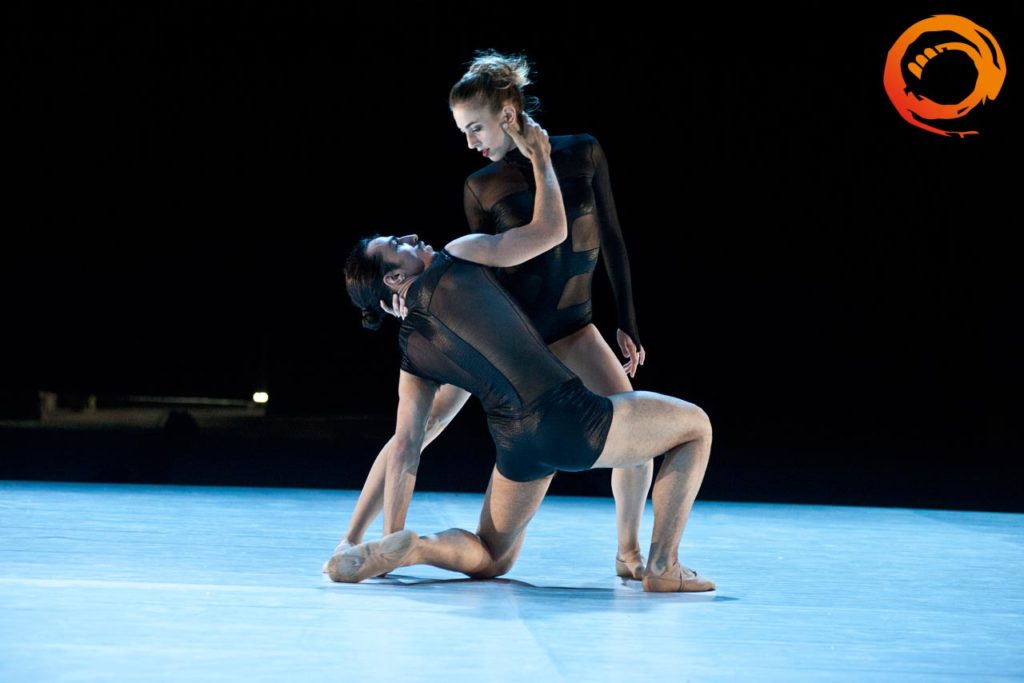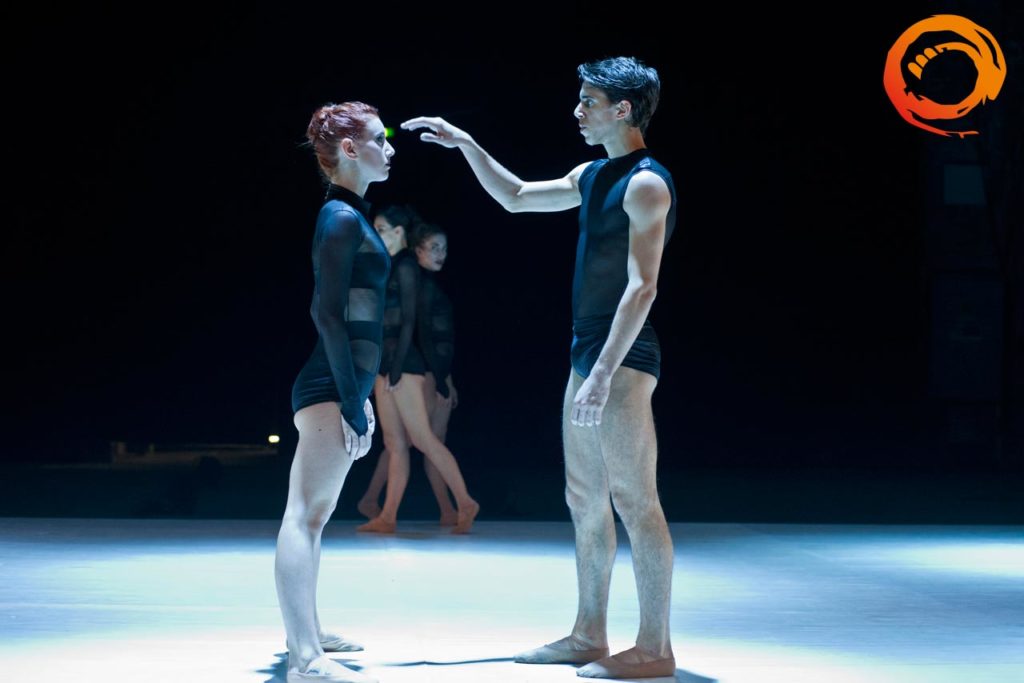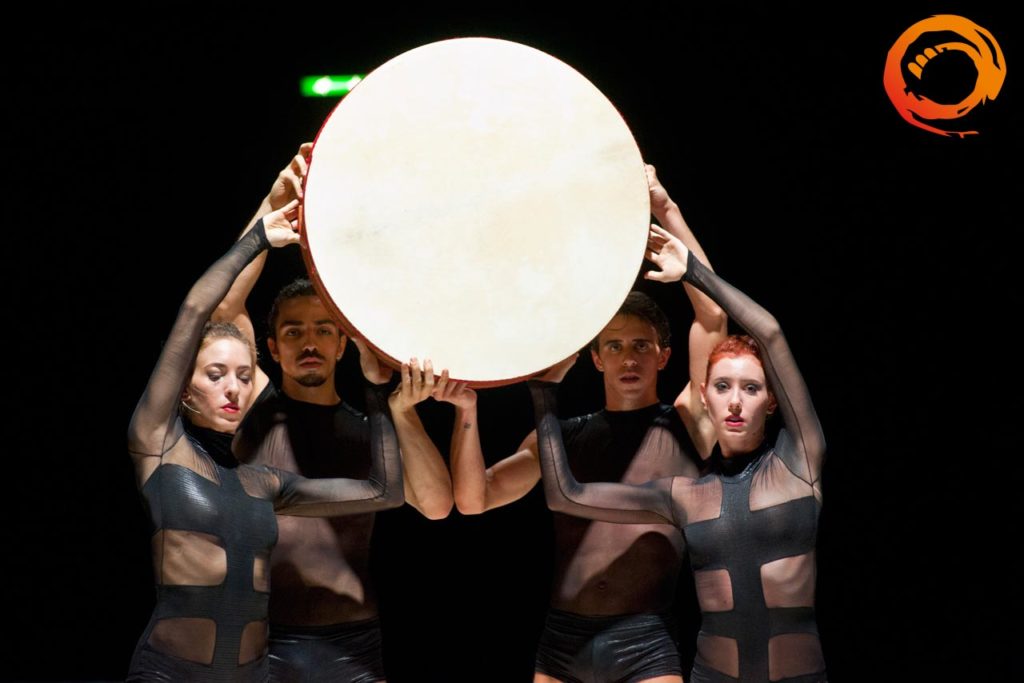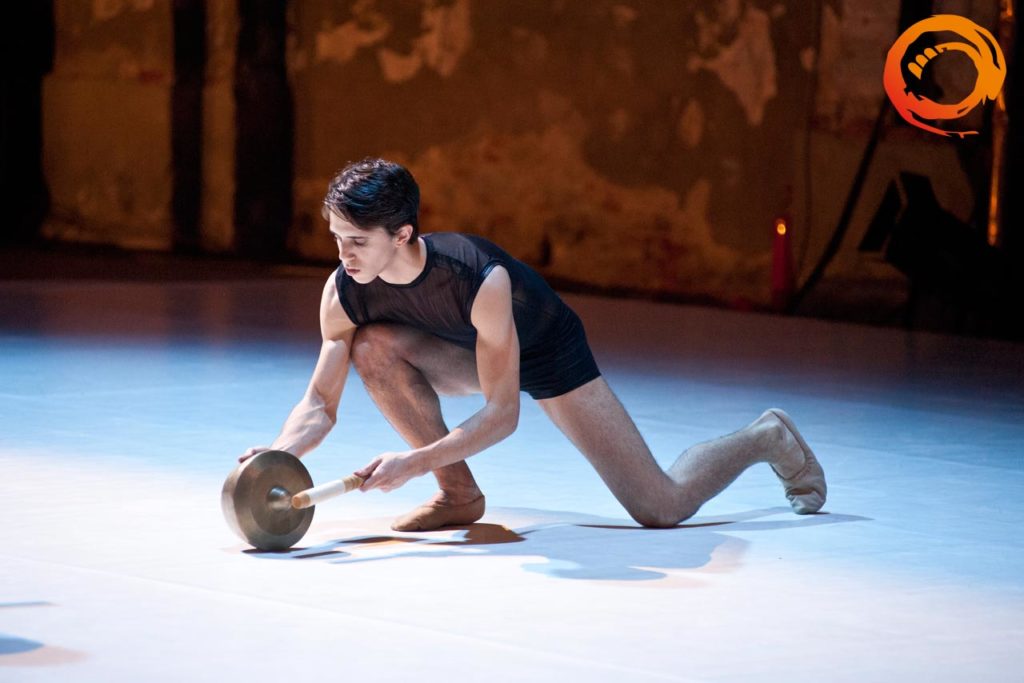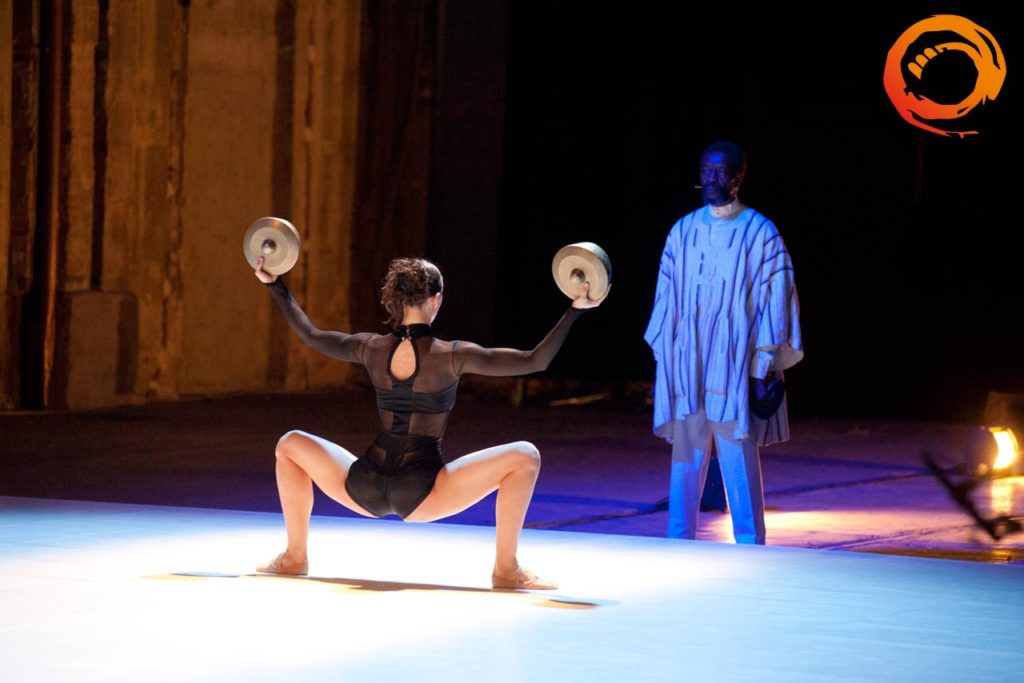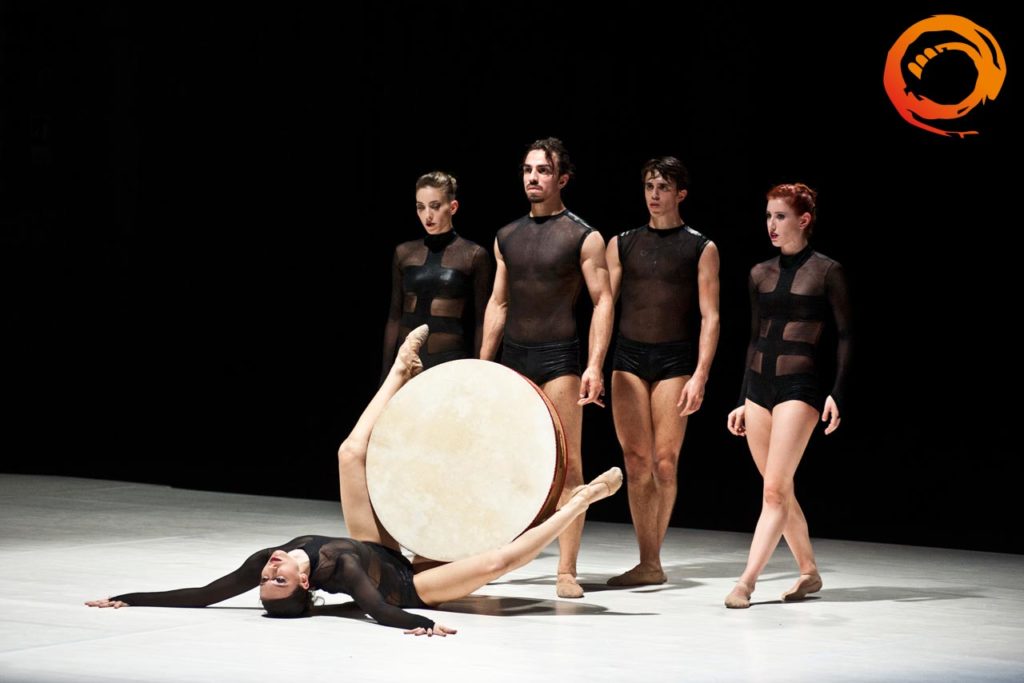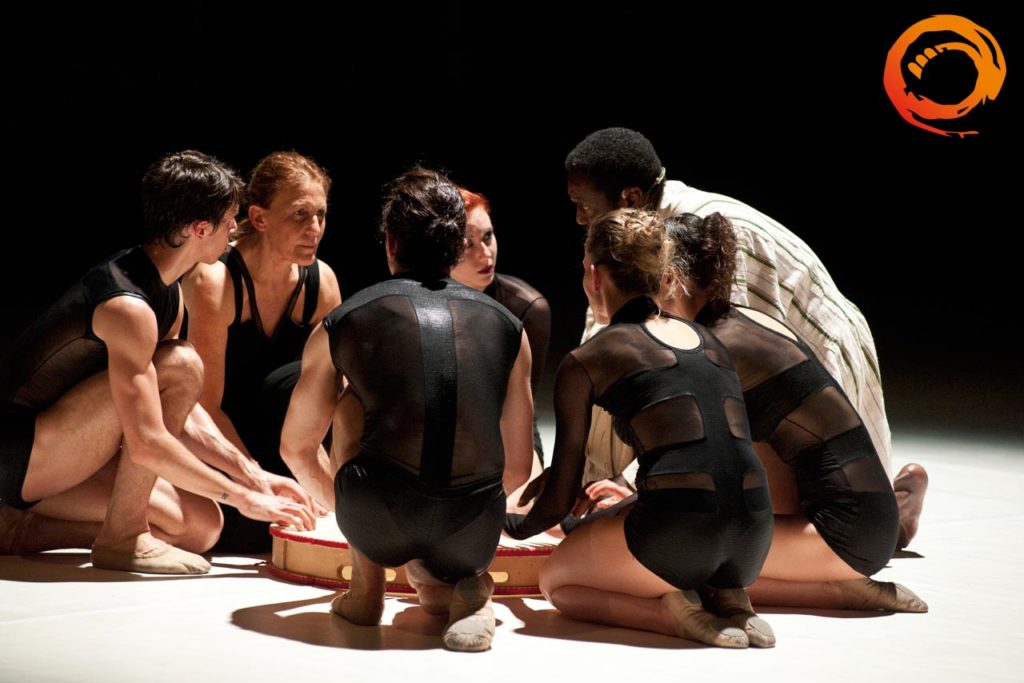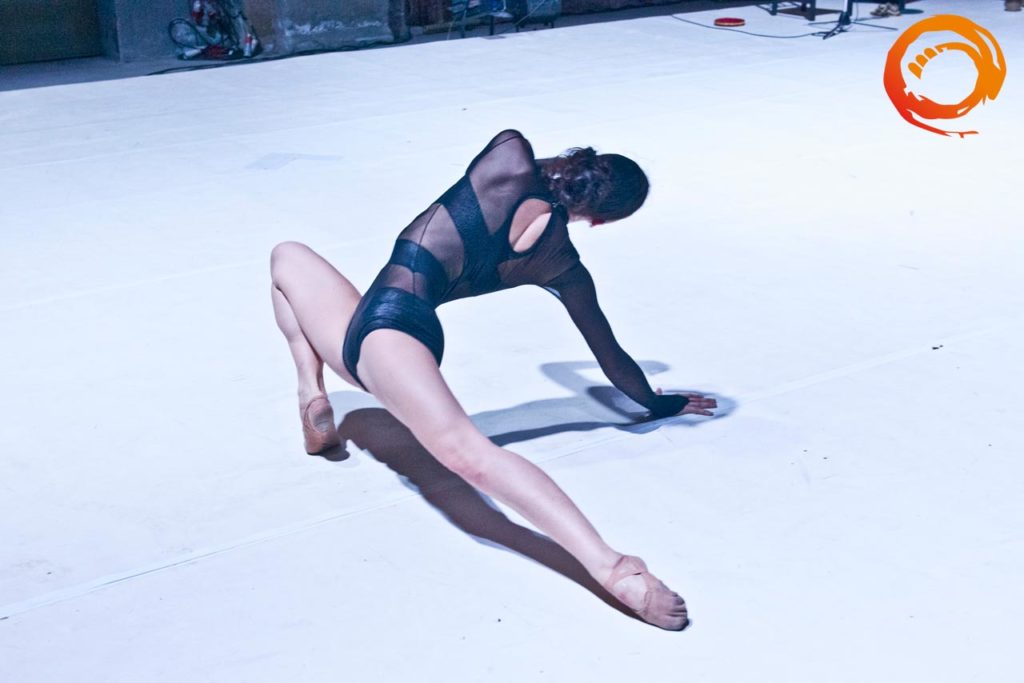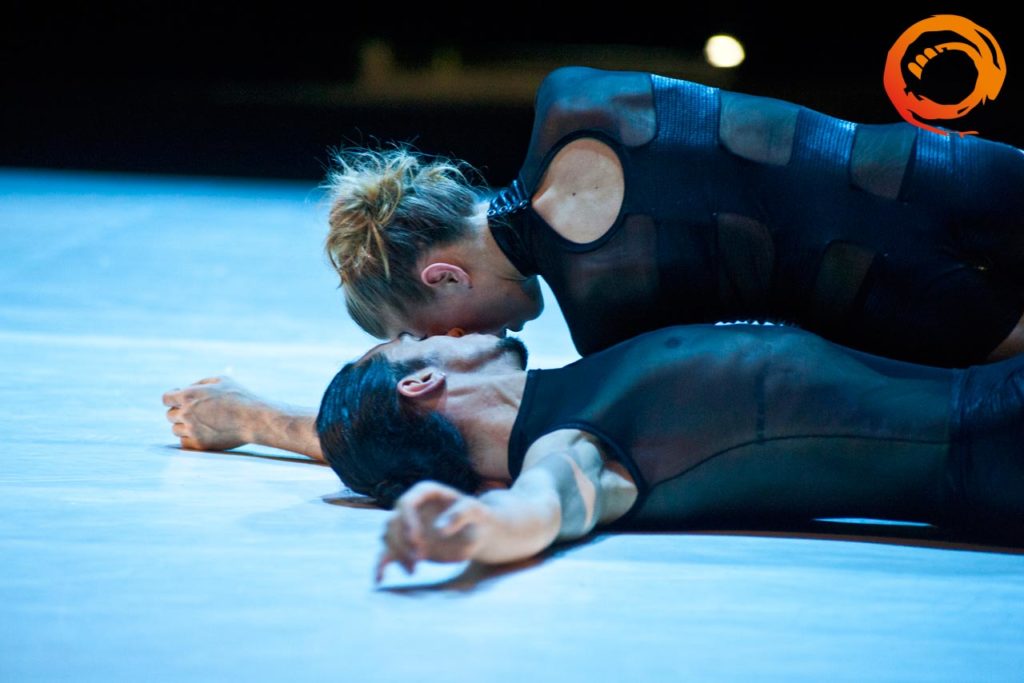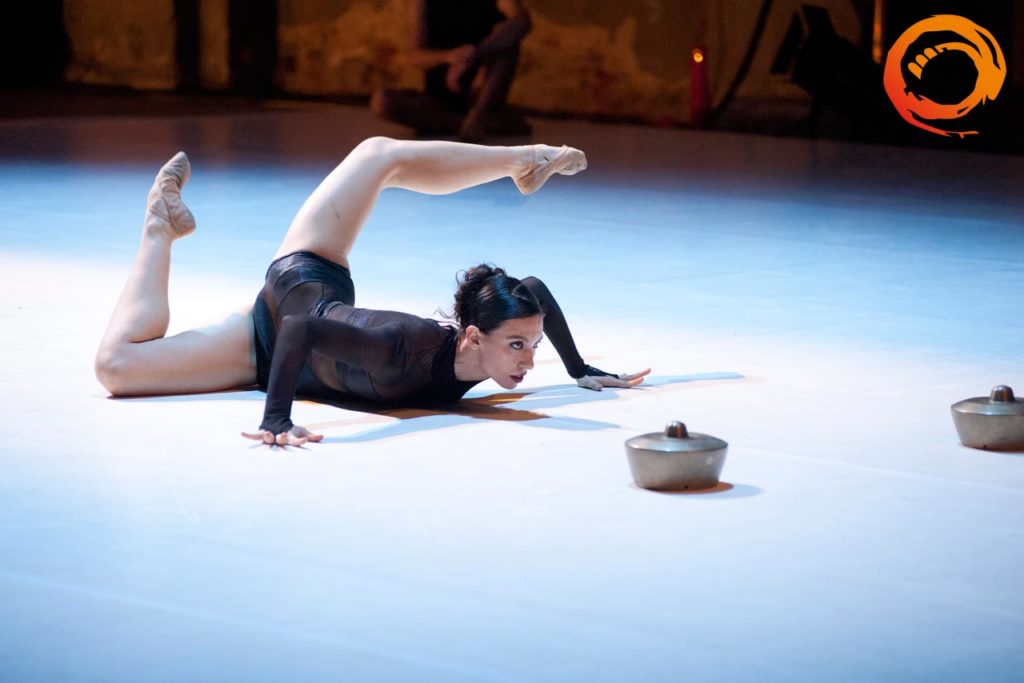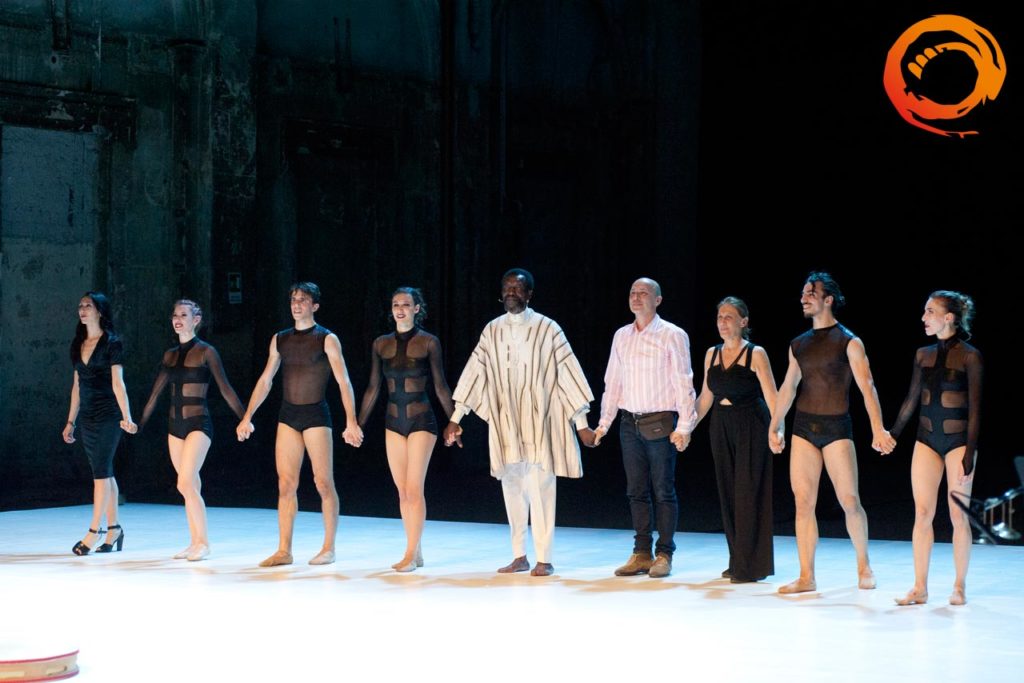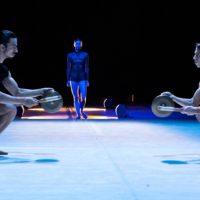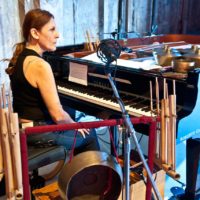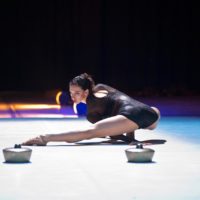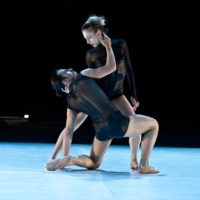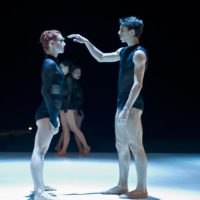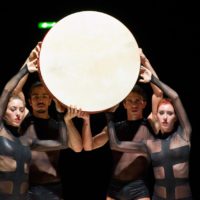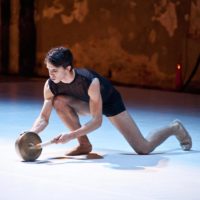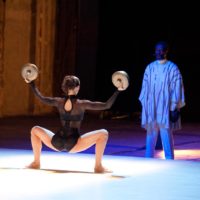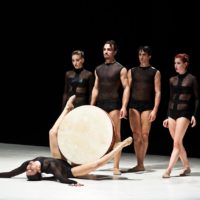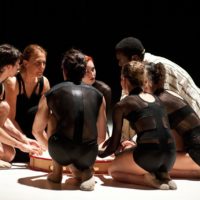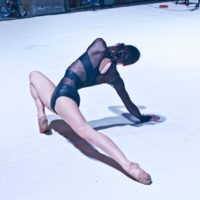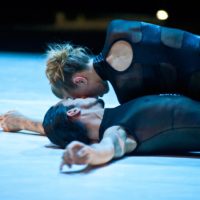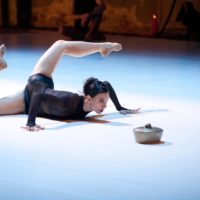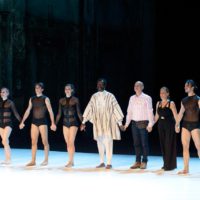A Balletto di Roma Production in co-production with Fabbrica Europa
Choreographic actions for five dancers, piano, percussion and singing
Katia Pesti
Katia Pesti qualified in piano studies at the Reggio Calabria ‘Francesco Cilea’ Conservatoire and attended the piano perfectionist course at the Siena Accademia Chigiana with Guido Agosti. She then obtained the diploma in Music Therapy at the Assisi CEP and in Dance Therapy at the Milan Scuola Civica with Maria Fux, studies she continued in Florence at the Centro Danza e Movimento of Lilia Bertelli. She also undertook studies in electronic music with the composer Alessandro Cipriano at the Istituto di Musica Bellini in Catania. She became fascinated by Asiatic music and in Indonesia she studied the Balinese Gamelan, before attending courses of percussion instruments in Italy, held by the Director of the Strasbourg Percussionists M° C. Hamouy, and the seminars under M° Ben Omar. The results of these courses of study led her to experiment with the possibility of playing the piano and percussion instruments at the same time, thus creating a composition system that was utterly personal, and in which elements of classical language merge with pan-ethnical sonority, thanks to minimalist interlocking, enriched by percussion tone and colour, ranging from the use of the typical Balinese Reyong, to Gongs and Drums. In the Nineties she began her activity as a composer, adding experiences in ethnic and experimental music to her repertory of classical music. In 2013 she was a finalist in the “Franz Liszt” award for composers at the Festival of Bellagio and Lake Como – Centro di Musica Contemporanea of Milan.
Gabin Dabiré
Gabin Dabiré was born in Bobo-Dioulasso in Burkina Faso. After some experience in his own country, he travelled through Europe increasing a series of musical experiences. In 1975 he settled in Denmark where he came into contact with European experimental music, and then with eastern music which led to prolonged stays in India, where he got to know the religious, classical and ethnical music of the country, relating to the great masters of Sitar Sarod and Tabla. On returning to Europe, he continued his study of African and Asian percussion instruments, the chordophone, singing and composition. Together with a number of Milan artists he created the multi-media group “Correnti Magnetiche” sounds and images from earliest times to electronic music, with whom he produced “Futuro antico I e II”, “Les Balafons de Haute Volta”, “Les musiques de Haute Volta”, “Afganistan”. During those years, with his group Yelbuna (Sources) he toured throughout Europe, catalyzing great attention from the press and the public. In Italy, his work for the diffusion of African culture is important: in 1984, with the collaboration of Elena Albini Trissino dal Vello d’Oro, in Milan he founded the “Centre for the Promotion and Diffusion of African Culture”, under the patronage of UNESCO, for the development of literature, cinema, theatre, dance and music. After creating the most important manifestations on Africa still thriving in Milan today, he decided to devote himself exclusively to his music, and in 1987 he moved to Tuscany. Eclectic personality and multi-instrumentalist, he moves from chordophones to percussion to ethnic instruments.

